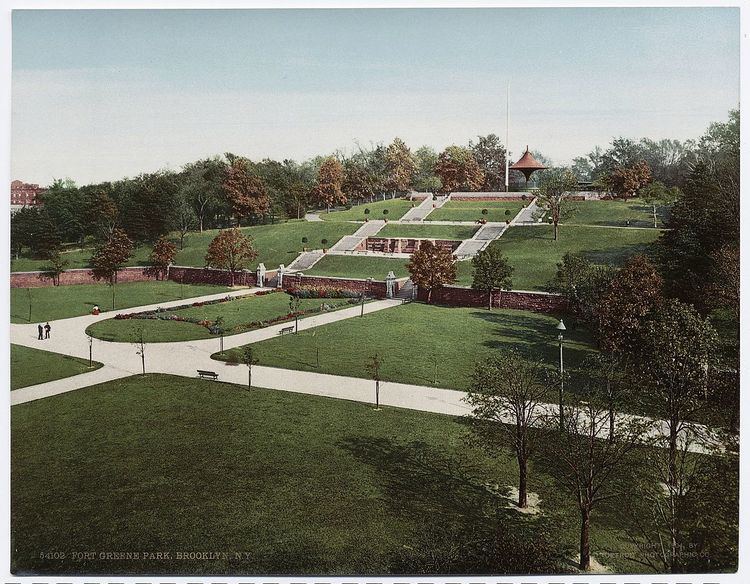Phone +1 718-722-3218 | ||
 | ||
Address Washington Park St to St Edward St, Brooklyn, NY 11205, United States Hours Open today · 5AM–1AMTuesday5AM–1AMWednesday5AM–1AMThursday5AM–1AMFriday5AM–1AMSaturday5AM–1AMSunday5AM–1AMMonday5AM–1AM Similar Prison Ship Martyrs' Monument, Doughboy Park, Inwood Hill Park, Riverside Park, East River Park | ||
Nyc s mass grave at fort greene park what remains
Fort Greene Park is a city-owned and -operated park in the Fort Greene neighborhood of Brooklyn, New York City. The 30.2-acre (12.2 ha) park was named after the fort which was formerly located there, originally named Fort Putnam, and then renamed Fort Greene in 1812 for Nathanael Greene, a hero of the American Revolutionary War.
Contents
- Nyc s mass grave at fort greene park what remains
- Fort greene park
- History and description
- Prison Ship Martyrs Monument
- Events
- References
Across the street from the DeKalb Avenue entrance at Ft. Greene Place is Brooklyn Technical High School. To the west is the oldest hospital in Brooklyn, Brooklyn Hospital Center. North of the park are the Walt Whitman Houses, one of the largest housing projects in New York City.
Fort greene park
History and description
The park includes part of the high ground where the Continental Army built fortifications prior to the Battle of Long Island, during the early days of the American Revolutionary War. The site was chosen and construction supervised by General Nathanael Greene; it was named Fort Putnam. During the War of 1812, when the possibility of a British invasion led to the re-use of the site for defense, the newly rebuilt fortification was named Fort Greene in his honor.
After the fort's military use had waned, poet Walt Whitman, then the editor of the Brooklyn Daily Eagle, was a strong advocate of reclaiming the space for use as a public park. The City of Brooklyn had, by 1842, bought property around the fort from the Cowenhoven family, and in 1847 created what was then called Washington Park, Brooklyn's second park, after Commodore Barry Park.
In 1896, Frederick Law Olmsted and Calvert Vaux, who also designed Central Park and Prospect Park, prepared a plan for the redesign of the park, whose name was changed to Fort Greene Park.
In 2015, a statue of the former National Security Agency contractor Edward Snowden was briefly illicitly erected in the park before being taken down by park officials the same day. The next day, it was replaced by a projected hologram.
Prison Ship Martyrs' Monument
One of the park's distinctive features is the Prison Ship Martyrs' Monument. During the Revolutionary War, the British had kept American prisoners on ships in Wallabout Bay under terrible conditions. Around 11,500 prisoners died from disease and malnutrition. Olmsted and Vaux envisioned a crypt to hold their remains, with an appropriate monument. The crypt was built, and the remains of the prisoners were re-interred there in 1873. There was also a small monument.
Eventually, funds were raised for a larger monument. The architectural firm of McKim, Mead, and White won a design competition, and the monument was unveiled in 1908 by President-elect William Howard Taft. It is a 149-foot (45 m) high granite Doric column over the crypt. At the top is an eight-ton bronze urn. At night the monument is illuminated by four electric lights set in four granite shafts. Bronze eagles graced each shaft, and two cannons guarding the plaza and the Martyrs' crypt below.
Events
Fort Greene Park is host to the annual Fort Greene Park Summer Literary Festival, an event featuring young writers aged 7–18 reading alongside established writers, such as Sonia Sanchez, Amiri Baraka, Jhumpa Lahiri, Gloria Naylor, and Jennifer Egan. The Fort Greene Park Conservancy operates a summer concert series. The Greene Glass Project was started in 2010 to address the thousands of shards of broken glass in the park. The organization hosts annual cleanups in the summer.
